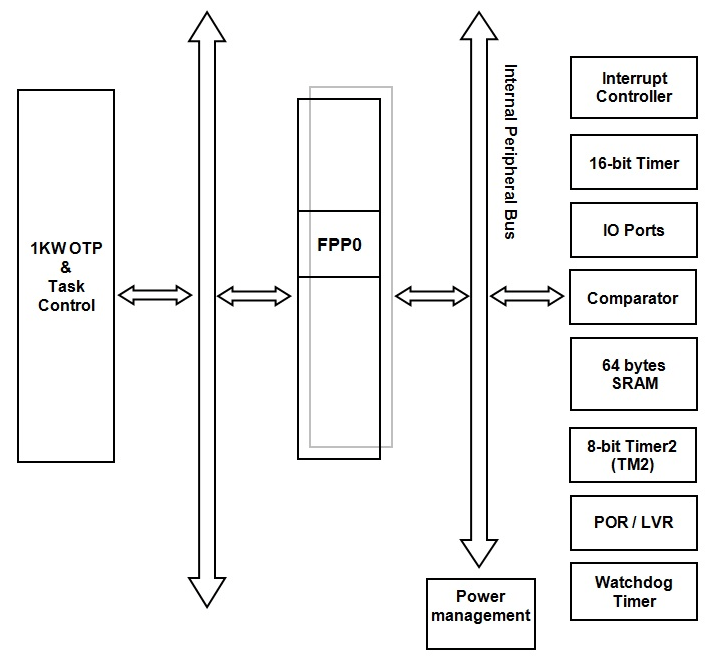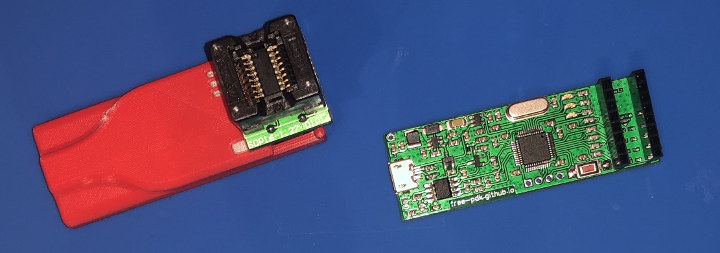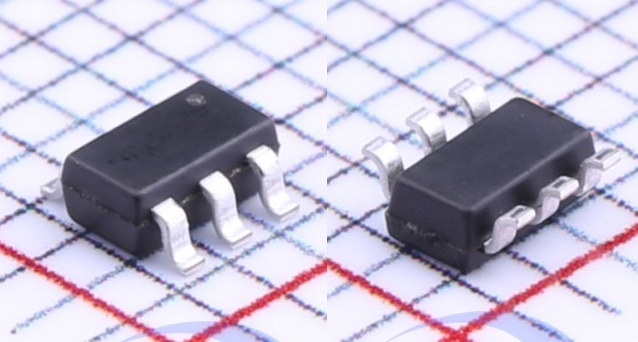Back in 2016, I tried to find the cheapest MCU, and discovered Holtek HT48R002 8-bit RISC MCU @ 8MHz with 1K x 14-bit OTP memory, and 64 bytes of RAM that was selling for around 8.5 cents per unit for 1k orders at the time, and about the same now.
But this morning, I read a post about sub-10-cents microcontrollers where cpldcpu details offering of several mostly little known vendors including Bojuxing Industrial, Eastsoft Micro, or Puolop. But Paudauk PMS150C especially caught my attention since price starts at $0.033, or 3 cents, and EEVBlog community has been working on getting SDCC open-source toolchain to work on the MCU.
PMS150C MCU specifications:
- CPU – Processing unit with 79 “powerful” instructions
- Memory – 64 Bytes data RAM
- Storage – 1KW (1K x 14-bit) OTP program memory
- Peripherals
- 1x hardware 16-bit timer; 1x hardware 8-bit timer with PWM generation
- 1x general purpose comparator
- Up to 6x I/O pins with optional drive/sink current and pull-high resistor
- 1x external interrupt pin
- Misc
- Fast wake-up support on each I/O
- Internal high RC oscillator and internal low RC oscillator;
- Eight levels of LVR (Low Voltage Reset)- 4.0V, 3.5V, 3.0V, 2.75V, 2.5V, 2.2V, 2.0V, 1.8V
- Packages
- PMS150C-U06: SOT23-6 (60mil)
- PMS150C-S08: SOP8 (150mil)
- PMS150C-D08: DIP8 (300mil)
- Temperature Range – -20°C ~ 70°C

The product page has mostly bilingual (English + Chinese) documentation and application notes, as well as link to the IDE and program writer software.
As mentioned in the introduction, a small community formed in EEVBlog around Padauk MCU to reverse-engineer the programmer and create an open-source toolchain for the device. This lead to the design of an open source hardware programmer and several flavors of the PDK architecture is now supported by SDCC open-source toolchain which also works with many other low-end MCUs such as STM8.

If you’d like something with reprogrammable flash as opposed to OTP ROM, the PFS154 embeds 2k x 14-bit flash memory for about twice the price, or close to 7 cents. The PFS173 is another member of the family with even more storage (3k x 14-bit), and 256 bytes RAM, as well as an 8-bit ADC.
If you wonder what can be done with such low-end MCUs, well, you can blink LEDs, more exactly 300 RGB LEDs…
The instructions are available on Anders’ website, or Github repository with the source written in “Mini-C”.
So where can you buy the chip without going physically in China. One option is LSCS where it’s sold for 0.0318 USD a piece if you order 100 or more for a whopping total of $3.18. Other options are Taobao (in Chinese), but you can always find Taobao “forwarders”, and Semilotec..
I could not find any PMS150C development boards nor breakout boards, but I suppose it should be feasible to use an SOT23-6 or SOP8 breakout board like this or that.

Jean-Luc started CNX Software in 2010 as a part-time endeavor, before quitting his job as a software engineering manager, and starting to write daily news, and reviews full time later in 2011.
Support CNX Software! Donate via cryptocurrencies, become a Patron on Patreon, or purchase goods on Amazon or Aliexpress. We also use affiliate links in articles to earn commissions if you make a purchase after clicking on those links.







Storage – 1KW OTP program memory – eh?
LOL, Kilo Word. 😉
Yes, they talk in words, not bytes. One word is 14-bit I think. I’ll make that clearer.
I thought 1 word = 16 bits
1 kilo words = 1 picture
I haven’t looked but I doubt you can’t get a z80 with similar performance specs that isn’t just as open if not more so for less money…
Digi-Key has 8MHz Z80 for $5.36 in singles.
I don’t think you can get a z80 but there are tons of very cheap 8051 parts and some very cheap PIC clones on taobao. A cortex m0 stm32 (probably clone) is about 20 cents.
These parts are good for replacing a complicated 555 timer setup.
The Puolop PTB150CSE is the same chip but a bit cheaper. Since this is OTP and is not meant for development, there’s the PFS154 which has double the price, 2kW flash, 3×11 bit PWM and you can flash it as many times you like.
One thing they have in common is that they all need high voltage programming, hence is difficult to do that on the real pcb.
And they’re not in DIP, so taking them out to reprogram is not really an option.
Of course you can program SOP chip, there are SOP to DIP sockets available on the market for that.
by high voltage, you mean 12v?
I don’t remember the specs by heart, but it is higher than the operating voltage, which means it makes the design more complicated and more expensive (depending the surrounding peripherals).